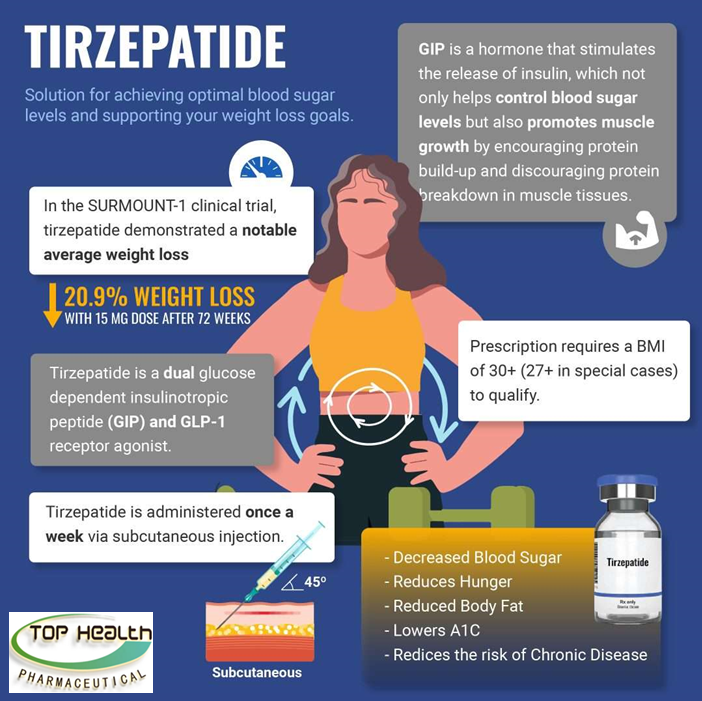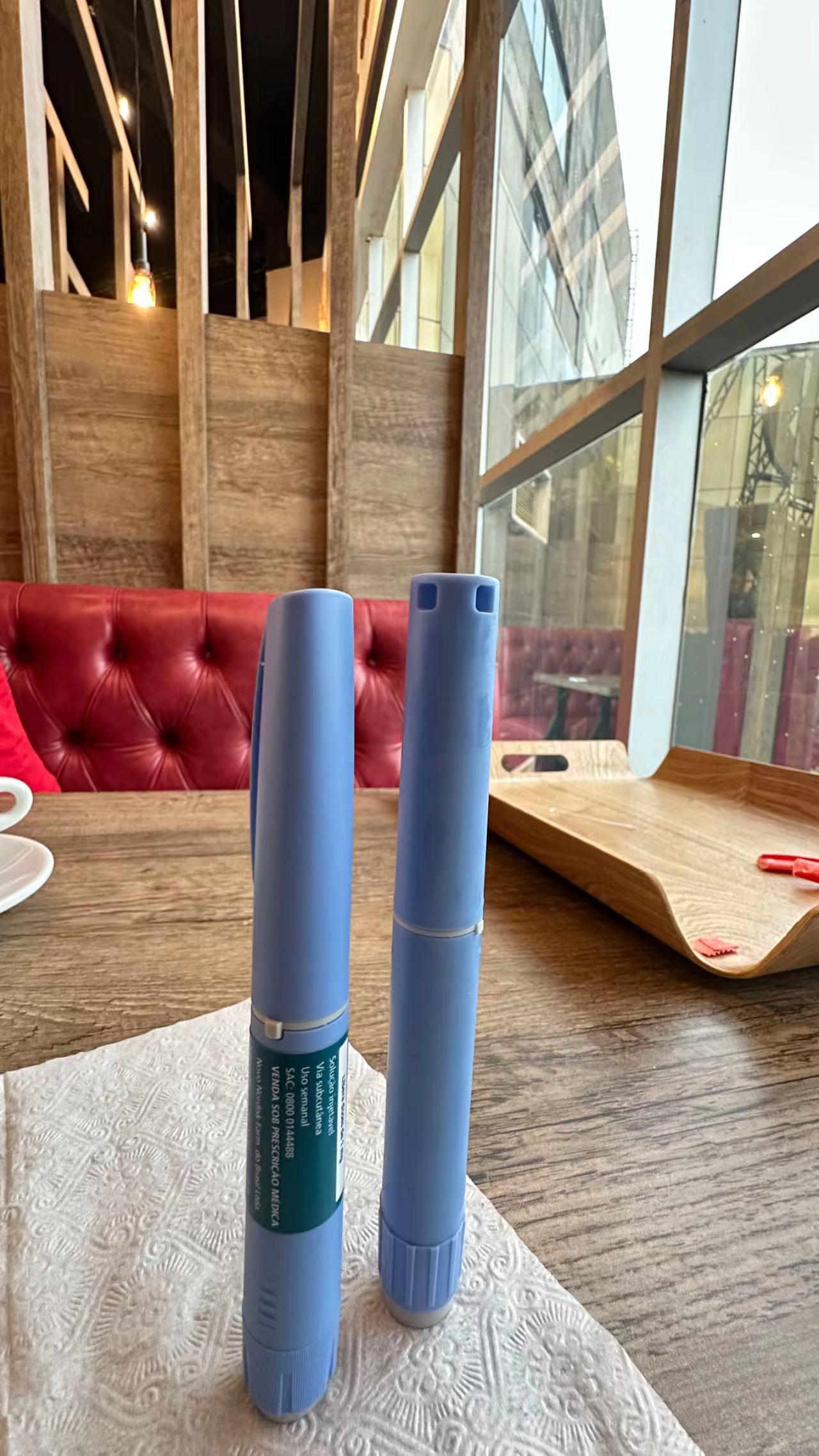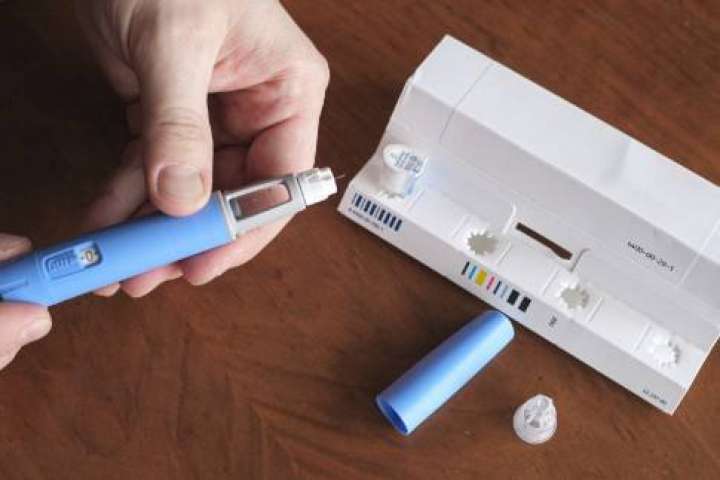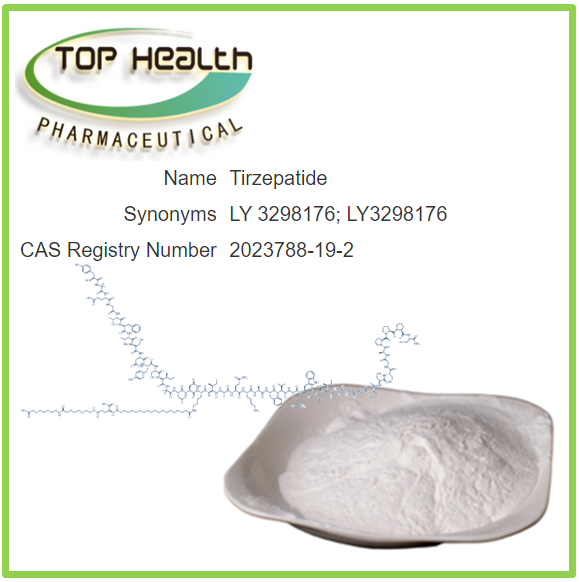
Successful Weight Loss! Tirzepatide vs semaglutide: How do they compare?

- publish:2024-04-09 12:35:17
Both tirzepatide and semaglutide are prescription medicines used with diet and exercise to treat people with type 2 diabetes or to help people lose and maintain weight loss. They are marketed as the brand name products Ozempic, Rybelsus or Wegovy (semaglutide) and Mounjaro or Zepbound (tirzepatide).
What are the approved uses for Mounjaro, Ozempic and Rybelsus?
Mounjaro, Ozempic and Rybelsus are all used with diet and exercise to help control blood sugar (glucose) levels in adults with type 2 diabetes. Ozempic is also approved to reduce the risk of a major cardiovascular event (like a heart attack or stroke) in adults with type 2 diabetes. Mounjaro has not yet received this indication, although studies are underway.
These drugs can help you reach your A1C goal, which can prevent diabetes complications like heart and blood vessel disease, nerve or vision damage, and kidney failure. A1C is a laboratory test that shows how well your blood sugar is controlled over the long term.
Mounjaro and Ozempic are given as a weekly subcutaneous (under the skin) injections in the abdomen, thigh, or upper arm. You, or a caregiver, can learn to give these injections at home. Rybelsus is given as an oral tablet taken once per day.
Mounjaro, Ozempic and Rybelsus have also been shown in studies to help with weight loss in patients with type 2 diabetes, but they are not specifically FDA-approved for this use.
What are the approved uses for Zepbound and Wegovy?
- Wegovy is a weight loss medicine approved to be used in adults and children 12 years and older with obesity, or excess weight and weight-related health problems (like high blood pressure or high cholesterol).
- Wegovy is also approved in adults with heart disease and obesity or overweight to reduce the risk of serious heart problems, like heart attack, stroke or heart-related death.
- Zepbound is also used for weight loss in adults with obesity or who are overweight with weight-related medical problems.
- Both medicines should be combined with a reduced calorie diet and exercise program.
Wegovy and Zepbound are given as a weekly subcutaneous (under the skin) injection and can be given at home after training from a healthcare provider.
How do semaglutide and tirzepatide work?
Semaglutide (Ozempic, Wegovy, Rybelsus) and tirzepatide (Mounjaro, Zepbound) are both in the class of drugs known as incretin mimetics and work similarly but have some differences in mechanism and dosing. Both drugs are FDA approved in various brand names as treatments for type 2 diabetes and long-term weight loss.
Semaglutide is a glucagon-like peptide-1 (GLP-1) receptor agonist and mimics the natural GLP-1 hormone in our bodies. It binds to the GLP-1 receptor to exert its effect.
Tirzepatide is a dual-acting glucose-dependent insulinotropic polypeptide (GIP) and glucagon-like peptide-1 (GLP-1) receptor agonist and binds to both GIP and GLP-1 receptors. Like GLP-1, GIP is also a natural incretin hormone and may increase the action of tirzepatide.
These medicines work by:
- stimulating insulin release from the pancreas when needed to help lower your blood sugar
- decreasing the amount of sugar made by your liver by suppressing glucagon secretion
- slowing the movement of food through your stomach (gastric emptying) which can help you feel fuller for a longer period of time, decrease your appetite and lead to weight loss.
These medicines should not be used together or with any other GLP-1 or GIP receptor agonists.
How are they given?
Mounjaro, Wegovy, Ozempic and Zepbound are given once per week as injections under the skin (subcutaneously) in the stomach area (abdomen), thigh or upper arm. You or a caregiver can learn to give these injections at home using an injector pen.
Rybelsus is an oral option for type 2 diabetes that you can take by mouth once a day, but it has very specific instructions.
- You must take this medicine on an empty stomach when you first wake up with a sip of plain water only (4 ounces or less) to help it be absorbed correctly.
- Take it 30 minutes before your first food, drink (except a sip of water), or other oral medications.
- Swallow the Rybelsus tablet whole (do not crush, split or or chew it). If you take other medicines first thing in the morning, ask your doctor about a schedule change.
With any of these medicines, your doctor will start you with lower doses to help prevent common stomach side effects like nausea, vomiting, diarrhea which are common to drugs in the incretin mimetic class. Other common stomach side effects may include constipation, indigestion, loss of appetite and stomach area (abdominal) pain.
As you get used to the medicine, your healthcare provider will increase your doses to your regular maintenance doses.
Your doctor may have you take these medicines in combination with other treatments for type 2 diabetes, like metformin, SGLT-2 inhibitors, insulin or sulfonylurea treatments.
Learn More:
- Dosing for tirzepatide (Mounjaro, Zepbound)
- Dosing for semaglutide (Ozempic, Wegovy, Rybelsus)
How do tirzepatide and semaglutide compare in studies?
Overview
- In a comparative study for type 2 diabetes, semaglutide lowered A1C levels by about 1% to 2%, while tirzepatide lowered A1C by 2% to 2.5%.
- Weight loss with semaglutide ranged from 6 to 10 kg (13.2 to 22 lb). With tirzepatide, weight loss ranged from 7 to 13 kg (15.4 to 28.6 lb). Tirzepatide may have a better effect to help lower blood sugar and lead to weight loss in some patients, but may be associated with more stomach side effects at higher doses.
- Semaglutide (Ozempic and Wegovy) have been shown to reduce cardiovascular risks, like heart attack, stroke and heart-related death, in patients with type 2 diabetes or obesity and established heart disease. Both products are FDA-approved for this use. Cardiovascular outcomes studies for tirzepatide are still ongoing.
- One U.S. study, utilizing a cost needed to treat analysis, has shown that tirzepatide (Zepbound) may offer a better value for money when compared to semaglutide (Ozempic) for weight reduction over 68 to 72 weeks.
Semaglutide vs. Tirzepatide: SURPASS-2 study
In the Phase 3, head-to-head study SURPASS-2, tirzepatide (Mounjaro) was compared to semaglutide (Ozempic) in an open-label, 40-week long study with over 1,870 participants with type 2 diabetes. Researchers looked primarily to see how these drugs affected A1C reduction, but also evaluated weight loss.
Mounjaro 5 mg, 10 mg, and 15 mg injections were compared to semaglutide (Ozempic) 1 mg injections in adults with type 2 diabetes whose blood sugars were not controlled with 1,500 mg/day of metformin alone. Patients in the study had an A1C of 8.3% and a weight of 94.1 kg (207 lb) at the beginning of the study.
- Mounjaro reduced the A1C by 2% to 2.3% compared to a 1.9% reduction for participants in the semaglutide (Ozempic) 1 mg group.
- Mounjaro 5 mg, 10 mg or 15 mg also led to weight loss of 7.7 kg (17 lb) to 11.4 kg (25 lb), on average, compared to 5.9 kg (13 lb) for semaglutide (Ozempic).
It’s important to note that the Ozempic 2 mg dose was approved by the FDA in March 2022 for the treatment of type 2 diabetes, and effectiveness compared to Mounjaro with this higher Ozempic dose may have been greater.
In this study, the number of people who reported side effects was similar, but serious side effects occurred more frequently in the tirzepatide group (5.3% to 7%) compared to the semaglutide group (2.8%)
Tirzepatide vs. Semaglutide: Meta-Analysis
A meta-analysis is a type of statistical study used to combine the results of multiple clinical trials to answer a related research question. In one meta-analysis, investigators evaluated studies to compare the effectiveness and safety of tirzepatide to subcutaneous semaglutide in people with type 2 diabetes.
HbA1c: The meta-analysis contained 22 randomized controlled studies with over 18,000 participants. Researchers found that, compared to a placebo, the highest dose of tirzepatide (15 mg given once weekly) was most effective at reducing HbA1c (mean difference of 2%). This was followed by the tirzepatide 10 mg dose (mean difference of 1.86%) and then semaglutide 2 mg (mean difference of 1.62%).
Weight loss: Tirzepatide doses of 10 mg or 15 mg were more effective than 1 mg or 2 mg doses of semaglutide at lowering body weight. Tirzepatide doses of 5 mg were also more effective than 0.5 or 1 mg doses of semaglutide.
Stomach side effects: All doses of both drugs increased the risk for stomach side effects when compared to an inactive placebo, but the highest dose of tirzepatide (15 mg) showed the highest risk for nausea, vomiting and diarrhea.
Cost analysis: Tirzepatide vs. semaglutide for weight loss
A 2023 study determined the cost needed to treat (CNT) to achieve a 1% reduction in body weight using tirzepatide 15 mg vs. semaglutide 2.4 mg. The authors used weight reductions found in previous randomized controlled studies for both drugs (SURMOUNT-1 and STEP-1 studies, respectively).
CNT was calculated by multiplying drug costs (from a common US drug discount website) by follow-up time and dividing it the average weight reduction percentage for each drug vs. placebo.
- Results showed that tirzepatide led to a weight loss of 17.8% compared to 12.4% for semaglutide.
- The total cost of 72 weeks of tirzepatide treatment was estimated to be about $17,500 compared to $22,800 for 68 weeks of semaglutide.
- Overall, the cost to treat each 1% reduction of body weight was $985 with tirzepatide and $1845 with semaglutide.
How do side effects compare between tirzepatide and semaglutide?
Side effects are similar between tirzepatide and semaglutide, probably because they work in a similar manner for similar indications. Stomach side effects like nausea, vomiting, and diarrhea are most common for both tirzepatide and semaglutide and can occur in over 50% of all patients.
Stomach side effects can be severe in some patients, but are usually transient and decrease over the first few months of treatment. But about 4% to 8% of patients in studies stopped treatment, usually due to stomach side effects like nausea, vomiting, and/or diarrhea.
Most reports of nausea, vomiting, and diarrhea occur when doses are being increased at the start of treatment. Slowly increasing the dose, as recommended by your healthcare provider, may help to reduce stomach side effects with tirzepatide or semaglutide.
These agents do not usually cause low blood sugar (hypoglycemia) unless they are combined with other medicines that may cause hypoglycemia like the sulfonylureas or insulin.
SEND A MESSAGE
If you are interested in our products and want to know more details,please leave a message here,we will reply you as soon as we can.





